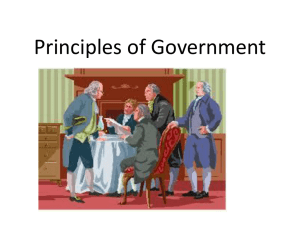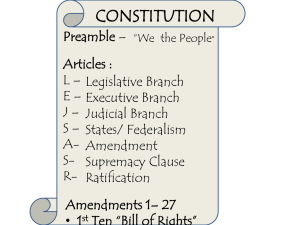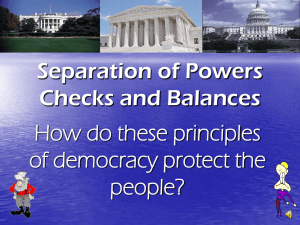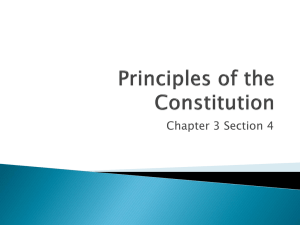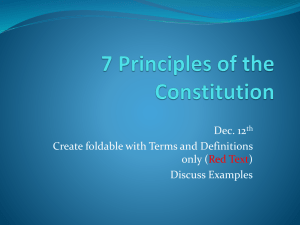Separation of Powers
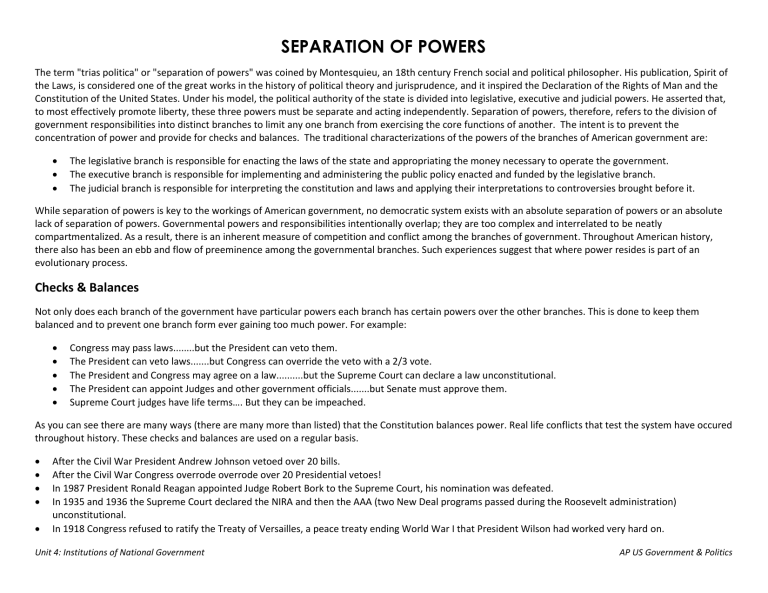
SEPARATION OF POWERS
The term "trias politica" or "separation of powers" was coined by Montesquieu, an 18th century French social and political philosopher. His publication, Spirit of the Laws, is considered one of the great works in the history of political theory and jurisprudence, and it inspired the Declaration of the Rights of Man and the
Constitution of the United States. Under his model, the political authority of the state is divided into legislative, executive and judicial powers. He asserted that, to most effectively promote liberty, these three powers must be separate and acting independently. Separation of powers, therefore, refers to the division of government responsibilities into distinct branches to limit any one branch from exercising the core functions of another. The intent is to prevent the concentration of power and provide for checks and balances. The traditional characterizations of the powers of the branches of American government are:
The legislative branch is responsible for enacting the laws of the state and appropriating the money necessary to operate the government.
The executive branch is responsible for implementing and administering the public policy enacted and funded by the legislative branch.
The judicial branch is responsible for interpreting the constitution and laws and applying their interpretations to controversies brought before it.
While separation of powers is key to the workings of American government, no democratic system exists with an absolute separation of powers or an absolute lack of separation of powers. Governmental powers and responsibilities intentionally overlap; they are too complex and interrelated to be neatly compartmentalized. As a result, there is an inherent measure of competition and conflict among the branches of government. Throughout American history, there also has been an ebb and flow of preeminence among the governmental branches. Such experiences suggest that where power resides is part of an evolutionary process.
Checks & Balances
Not only does each branch of the government have particular powers each branch has certain powers over the other branches. This is done to keep them balanced and to prevent one branch form ever gaining too much power. For example:
Congress may pass laws........but the President can veto them.
The President can veto laws.......but Congress can override the veto with a 2/3 vote.
The President and Congress may agree on a law..........but the Supreme Court can declare a law unconstitutional.
The President can appoint Judges and other government officials.......but Senate must approve them.
Supreme Court judges have life terms…. But they can be impeached.
As you can see there are many ways (there are many more than listed) that the Constitution balances power. Real life conflicts that test the system have occured throughout history. These checks and balances are used on a regular basis.
After the Civil War President Andrew Johnson vetoed over 20 bills.
After the Civil War Congress overrode overrode over 20 Presidential vetoes!
In 1987 President Ronald Reagan appointed Judge Robert Bork to the Supreme Court, his nomination was defeated.
In 1935 and 1936 the Supreme Court declared the NIRA and then the AAA (two New Deal programs passed during the Roosevelt administration) unconstitutional.
In 1918 Congress refused to ratify the Treaty of Versailles, a peace treaty ending World War I that President Wilson had worked very hard on.
Unit 4: Institutions of National Government AP US Government & Politics
Separation of Power + Checks & Balances
Directions: Inside the circles, list the powers held by each branch of government. On the arrows, indicate how the branches check one another’s power.
Unit 4: Institutions of National Government AP US Government & Politics

